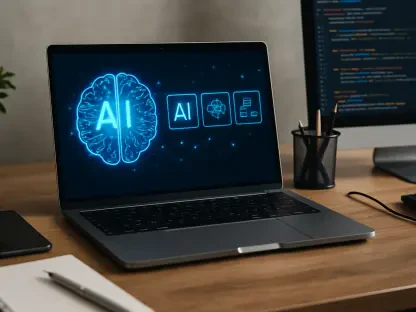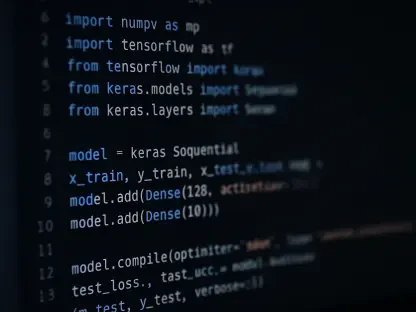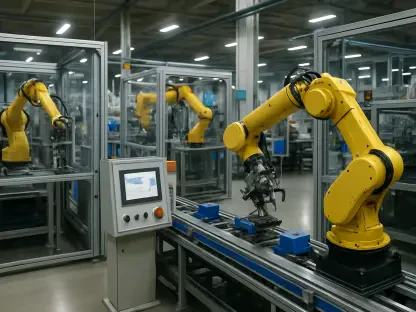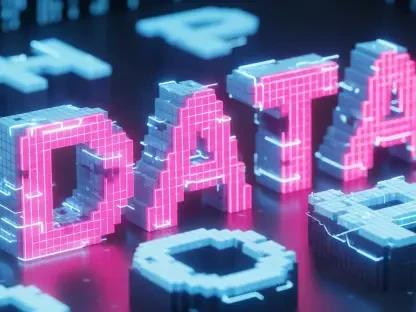A Revolution in Code: Can AI Teams Outpace Humans?
Picture a software development project racing against an impossible deadline, with tasks piling up—coding, testing, debugging, and deployment all demanding attention at once. What if a team of AI agents, each with razor-sharp expertise in a specific domain, could step in to handle these challenges simultaneously, working with the precision and synergy of a top-tier human engineering squad? This scenario is no longer a distant dream but a reality unfolding in tech hubs across the globe. Multi-agent AI workflows are emerging as a game-changer, promising to redefine how software is built by mimicking human collaboration at an unprecedented scale.
The significance of this shift cannot be overstated. As businesses grapple with the pressure to deliver complex applications faster than ever, traditional single-agent AI tools often fall short, unable to manage the intricate demands of modern projects. Multi-agent systems, however, offer a bold solution by deploying specialized AI entities that work in tandem, slashing timelines and boosting quality. This article delves into the transformative potential of these workflows, exploring their impact, expert perspectives, and practical steps for adoption in the fast-evolving software landscape.
Why Multi-Agent AI Is a Game-Changer for Developers
In today’s high-stakes software environment, speed and accuracy are paramount, yet the complexity of projects continues to grow. Developers face relentless pressure to meet tight deadlines while ensuring robust, error-free code, often stretching human resources to the limit. Multi-agent AI workflows address this critical gap by introducing a team-based approach where distinct AI agents handle different facets of development, from writing code to securing applications, mirroring the division of labor seen in elite tech teams.
Unlike single-agent tools that offer broad but shallow assistance, these systems excel by focusing on depth. For instance, one agent might specialize in crafting efficient algorithms while another ensures compliance with security protocols, together delivering results that align with organizational needs. Industry data underscores this impact, with studies showing that collaborative AI setups can reduce project delivery times by up to 30%, offering a lifeline to teams struggling with resource constraints.
This approach also tackles the growing workload developers face. As software demands escalate, the ability to delegate repetitive or specialized tasks to AI agents frees up human talent for strategic, creative problem-solving. The result is a workflow that not only keeps pace with market demands but also enhances the developer experience, setting a new standard for productivity in the field.
How Multi-Agent Systems Redefine the Development Life Cycle
Multi-agent AI workflows are reshaping every stage of software creation through a combination of specialization and seamless coordination. Each agent is designed for a specific role—whether it’s generating clean code, running exhaustive tests, or ensuring deployment readiness—allowing for precision that outstrips generalized AI tools. For example, platforms like GitHub Copilot shine in TypeScript development, while Mistral dominates Python tasks, illustrating how targeted expertise drives superior outcomes.
Speed is another cornerstone of this transformation. By enabling parallel processing, these systems allow multiple tasks to unfold simultaneously—one agent might write code while another conducts real-time testing, drastically cutting down on project timelines. Insights from tech leaders reveal that such parallel execution reduces context switching for developers by nearly 40%, streamlining focus and accelerating delivery without compromising on detail.
Quality is further enhanced through innovative collaboration techniques. Methods like adversarial prompting, where agents critique and refine each other’s work, ensure polished results, with recent metrics indicating a 25% improvement in accuracy for specialized models. Additionally, shared knowledge bases guarantee alignment with business standards, as seen in deployments at major retail and financial firms where AI outputs consistently met internal benchmarks, proving the reliability of these systems in high-stakes environments.
Expert Perspectives on the AI Team Revolution
Industry trailblazers are unanimous in their excitement—and caution—about multi-agent AI workflows. Harry Wang from Sonar highlights the inadequacy of single-agent systems for intricate tasks, advocating for specialized AI teams that mirror human expertise structures. “Complex projects need a division of labor, just like any engineering squad,” Wang notes, emphasizing the need for agents tailored to distinct roles to maximize impact.
Dr. Eran Yahav of Tabnine draws a compelling parallel, likening multi-agent setups to elite development units where human oversight remains critical. “These systems are powerful, but they’re not autonomous—developers must validate every step,” Yahav asserts, pointing to the balance between automation and control. Meanwhile, Zach Loyd of Warp shares tangible benefits, recounting how developers save hours weekly by tracking agent progress in real-time, though he warns of early security missteps that require vigilant monitoring.
These insights paint a nuanced picture of promise tempered by challenges. Early adopters have reported remarkable efficiency gains but also faced hurdles like data exposure risks when agents interact with external APIs. Together, these voices underscore a pivotal moment in tech—multi-agent AI holds immense potential, yet demands careful governance to navigate its pitfalls effectively.
Practical Steps to Integrate Multi-Agent AI into Workflows
Adopting multi-agent AI in software development requires a structured approach to ensure seamless integration and measurable results. Begin by establishing a centralized knowledge base that all agents can access, maintaining consistency in coding styles and system requirements across tasks. This foundation prevents discrepancies and aligns outputs with organizational expectations, a tactic proven effective in leading tech enterprises.
Human oversight must remain a priority to catch unexpected errors and validate AI decisions. Opting for specialized agents over generalist models is also key—tailor each agent to a specific function, such as debugging or performance optimization, to leverage their strengths. Start with small-scale pilots on routine projects to build confidence in the system, gradually scaling up as trust and familiarity grow, a strategy echoed in successful rollouts at global firms.
Finally, define clear performance metrics to evaluate agent effectiveness, akin to benchmarks used for human teams. Invest in a unified architecture with strict governance and permissions to facilitate smooth collaboration, minimizing risks of redundancy or conflict. By focusing on high-impact areas, such as automating repetitive testing cycles, teams can maximize value while mitigating disruption, paving the way for a sustainable shift toward AI-driven development.
Reflecting on a Milestone in Software Innovation
Looking back, the rise of multi-agent AI workflows marked a turning point in how software development tackled complexity and urgency. These systems, with their ability to emulate human team dynamics through specialized roles and parallel execution, delivered efficiency gains that reshaped project timelines and developer workloads. The journey revealed both remarkable strides and sobering challenges, from security concerns to orchestration hurdles, yet each obstacle spurred refinement in tools and strategies.
As teams move forward, the focus should shift to building robust frameworks that enhance agent interoperability and safeguard data integrity. Prioritizing iterative testing and governance will be crucial to unlocking the full scope of this technology. Beyond immediate gains, the broader implication lies in empowering developers to innovate without the burden of routine tasks, setting the stage for a new era of creativity and precision in software craftsmanship.









